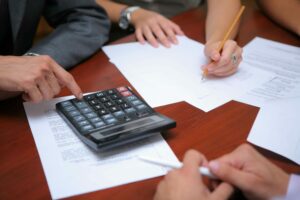Sorry, nothing in cart.
How to Calculate Cost of Goods Sold Using FIFO Method
- By Jeilo Collections
- |
- Bookkeeping
- |
- 30 Views
- |
- 0 Comment

11 Financial may only transact business in those states in which it is registered, or qualifies for an exemption or exclusion from registration requirements. 11 Financial’s website is limited to the dissemination of general information pertaining to its advisory services, together with access to additional investment-related information, publications, and links. The things which are manufactured for selling purpose or bought for reselling purpose are known as goods or merchandise. Selling and administrative expenses for the year amounted to $110,000. In turn, the net profit shows you, your investors, and other financial stakeholders (like banks) exactly how financially healthy your business is—which influences who invests in your business and how much.
- For example, if you are a manufacturing company, you may want to invest in machinery that can automate some of the production processes.
- That is due to its importance in establishing how the sales are – or can be – profitable.
- The purchases account is normally a debit balance and increases the net purchases.
- This amount includes the cost of the materials and labor directly used to create the good.
- If you haven’t decided on a method yet, factor in how each may affect your cost of goods sold.
- Get instant access to lessons taught by experienced private equity pros and bulge bracket investment bankers including financial statement modeling, DCF, M&A, LBO, Comps and Excel Modeling.
How do you calculate cost of goods sold?
This method helps avoid the sometimes complicated tasks of specific identification, especially for smaller-sized goods. This method follows the principle opposite the one observed in the FIFO method. If a company had purchased five units of merchandise at different costs, the first unit sold would be the fifth unit bought. Therefore, using this method will result in reporting higher net income for the company since the company will record a lower cost of sales.
- Creditors and investors also use cost of goods sold to calculate the gross margin of the business and analyze what percentage of revenues is available to cover operating expenses.
- The inventory calculation has a direct impact on the cost of goods sold, as any error in calculating the value of the inventory will affect the calculation of the cost of goods sold.
- The cost of goods sold is essential for any business for various reasons.
- Purchase allowances are allowances given by the supplier in respect of goods retained by the business where an amount is deducted in respect of damages, faults and defects etc.
- This information will not only help Shane plan out purchasing for the next year, it will also help him evaluate his costs.
- Every business that sells products, and some that sell services, must record the cost of goods sold for tax purposes.
Cost of goods sold and trial balance

GAAP lists it as a business expense and defines it as “including all the costs directly involved in producing a product or delivering a service.” It is used instead of sales because inventory is always valued at cost. The higher the price, the shorter time it will take to sell the stock and restock. An inventory turnover of 5 means that the company sells and supplies merchandise five times throughout its fiscal year. The cost of goods sold is essential for any business for various reasons.
Formula of Cost of Goods Sold
During periods of rising prices, goods with higher costs are sold first, leading to a higher COGS amount. No matter how COGS is recorded, keep regular records on your COGS calculations. You should record the cost of goods sold as a debit in your accounting journal. Instead, COGS is reported on the income statement and directly affects the inventory figures which are shown on the balance sheet. The balance sheet reflects the ending inventory, which is directly influenced by the COGS calculation.

Add inventory purchases for the period
Understanding these components helps businesses accurately calculate COGS, ensuring they have a precise measure of their production costs. This, in turn, aids in setting product prices, managing inventory, and assessing overall profitability. This and other unethical short-term accounting decisions made by Petersen and Knapp led to the bankruptcy of the company they were supposed to oversee and resulted in fraud charges from the SEC.

COGS and operating expenses are different sets of expenditures incurred by the business in running their day-to-day operations. With this method, the business will know accurately which item was sold and its exact cost. The final inventory will then be counted at the end of an accounting period. The unsold 430 items would remain on the balance sheet as inventory for $1,520. The COGS is identified with the last purchased inventories and moves upwards to the beginning inventories until the required number of items sold is fulfilled.
See profit at a glance
Shane also can’t prepare and accurate income statement until the end of each quarter. The cost of goods sold formula is calculated by adding purchases for the period to the beginning inventory and subtracting the ending inventory for the period. This includes things like excess materials, defective products, and unused packaging. The average cost is the total inventory purchased in the second quarter, $8,650, divided by the total inventory count from the quarter, 1000, for an average cost of $8.65. The calculation for COGS depends on the inventory costing method used by a company.
The inventory at the end of the period should be $8,895, requiring an entry to increase merchandise inventory by $5,745. Cost of goods sold was calculated to be $7,260, which should be recorded as an expense. The credit entry to balance the adjustment is $13,005, which is the total amount that was recorded as purchases for the period. This method requires calculating the average cost of all units of merchandise purchased in calculating the cost of sales. This is done by taking the total costs of all goods in inventory and dividing that figure by the number of goods. The cost of goods sold applies only to businesses that sell products.
- But other service companies—sometimes known as pure service companies—willn’t record COGS at all.
- Accurate records can give you peace of mind that you are on track come reporting time.
- He doesn’t need to repackage the books, but he does need to account for the freight cost to receive the books from his distributors as well as the cost of materials used to ship books to his customers.
- Operational costs such as marketing, sales force expenses, and after-sales support are not included in COGS.
- Your apps and subscriptions will remain active while your store is paused.
- The balance sheet has an account called the current assets account.
Item added to your cart
Cost of Goods Sold (COGS), otherwise known as the “cost of sales”, refers to the direct costs incurred by a company while selling its goods or services. The special identification method uses the specific cost of each unit of merchandise (also called inventory or goods) to calculate the ending inventory and COGS for each period. In this method, a business knows precisely which item was sold and the exact cost. Further, this method cost of goods sold is typically used in industries that sell unique items like cars, real estate, and rare and precious jewels. The COGS is deducted from your business revenue to determine the gross profit, which is then used to calculate taxable income. This deduction is typically reported on IRS Form 1040, Schedule C for sole proprietors and single-member LLCs, where it is specifically accounted for in the section detailing income and expenses.

Leave a Reply